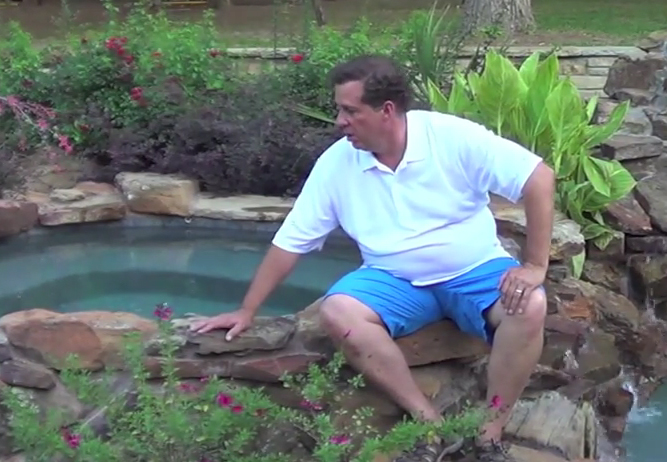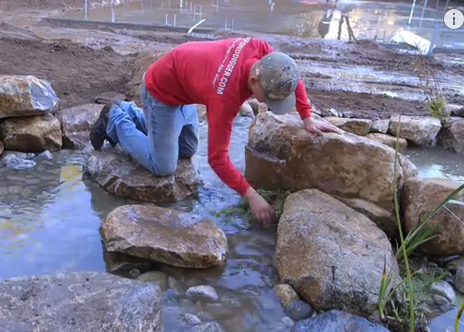ARTICLES
Advance Search
Aquatic Health
Aquatic Health, Fitness & Safety
Around the Internet
Aquatic Culture
Aquatic Technology
Artful Endeavors
Celebrity Corner
Life Aquatic
Must-See Watershapes
People with Cameras
Watershapes in the Headlines
Art/Architectural History
Book & Media Reviews
Commentaries, Interviews & Profiles
Concrete Science
Environment
Fountains
Geotechnical
Join the Dialogue
Landscape, Plants, Hardscape & Decks
Lighter Side
Ripples
Test Your Knowledge
The Aquatic Quiz
Other Waterfeatures (from birdbaths to lakes)
Outdoor Living, Fire Features, Amenities & Lighting
Plants
Ponds, Streams & Waterfalls
Pools & Spas
Professional Watershaping
Structures (Editor's Notes)
Travelogues & History
Water Chemistry
WaterShapes TV
WaterShapes World Blog
Web Links
Around the Internet
Aquatic Culture
Aquatic Technology
Artful Endeavors
Celebrity Corner
Life Aquatic
Must-See Watershapes
People with Cameras
Watershapes in the Headlines
I've been working as a watershape designer long enough to have seen big trends emerge and really take hold. It seemed for a while, for example, that vanishing edges came up at some point in just about every initial client conversation. More recently, I've found myself discussing lots of geometric pools - rectangles and various other squared-off perimeters - and that's great, because it gives us plentiful ways to
In recent years, more and more of our clients have asked us to use old hardscape materials on their projects: They love the stuff, they tell us, and they're sold on its aesthetic richness, authenticity and time-tested visual appeal. Living in southeastern Pennsylvania near some of the country's oldest cities gives me the advantage of ready access to these timeless objects - mostly old cobbles, bricks and stone curbing pulled up in the process of infrastructure
Our early-summer trip to Yellowstone National Park was a revelation to me, pure and simple. As I related in my Travelogue for July 22 (click here), the thing that occurred to me is that the inspiration at Yellowstone comes less from
'The way I see it,' wrote Brian Van Bower to start his Aqua Culture column in August 2000, 'we watershapers can look at ourselves in one of two ways: as diggers of holes in the ground that hold water, or as artists working with one of the most exciting mediums on the planet. For a lot of reasons, I like the second of those options, because the first is passive - the sole goal being to contain the water - while the second gets me more
There's no doubt that watershaping took it on the chin in the Great Recession. Some businesses vanished, and those that have persisted are, in many if not most cases, leaner than they were back in 2008 and just different in many respects from what they once were. It's also fair to report, because the economy and
ISIS Lists Swimming Pool Rules asTemperatures Soar in Mosul, Iraq
Pond-free waterfall systems are a conceptual oddity: At first thought, they don't seem as though they can in any way appear natural, with their long streams of cascading water disappearing into voids instead of flowing across the large sort of pond that is so familiar to most of us in natural settings. But I'm among those who like these odd watershapes - and I think much of it has to do with the fact that we
Back in 2001, I took a job working for a high-volume pool-construction firm as one of its 30 salespeople. For the first four years or so, I did all of my design work by hand. Quantity was always king in that operation, so I never even left the office: Someone would hand me a set of plans and I'd start working, despite the fact I'd never walked the site, seen its surroundings or had any
'Everywhere you turn these days,' wrote David Tisherman to start his Details column in August 2005, 'you see watershapers tackling projects that would have been unthinkable even a few years ago.' 'With this broadening list of possibilities, however, . . . [t]he industry's like a teenager with a fresh driver's license: just because he or she knows how doesn't necessarily mean that
Something has been nagging at the edges of my consciousness for a while now, and I think it's high time to write about it. One of my duties for the past several years has been to roam the Internet to find stories related to pools and all sorts of other watershapes and decide whether a given item merits your attention. From the start, I noticed but did not share a whole class of items related to





















